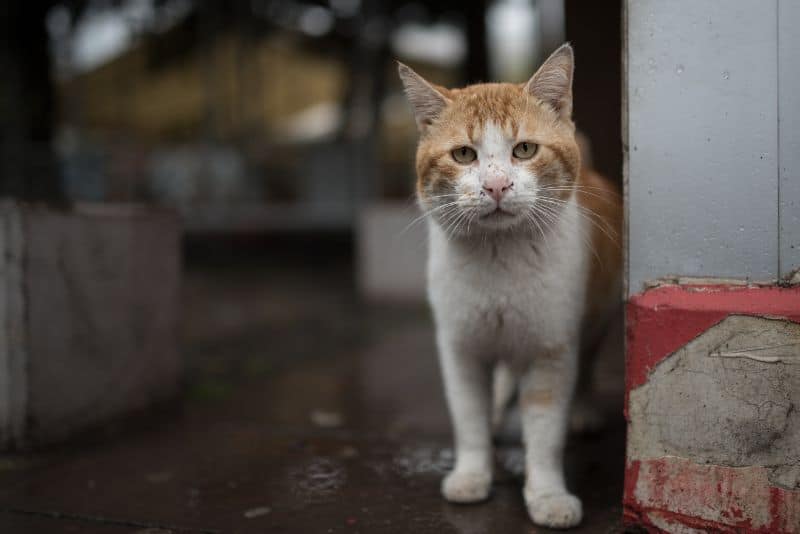Feral Cats May Be Ubiquitous, but Do They Need Our Help?

Alley ways, country lanes, suburban streets, and urban boulevards all have something in common: they are thoroughfares for feral cats.
The differences between feral cats and the ones we live with are striking. They are extremely skittish and fearful of humans, but instead of earning their reputations as public nuisances, they are at risk of serious illness or injury. As you might expect, there are lots of ways we can help feral cats, and the results can be deeply satisfying.
Strange Paw Prints
If you’ve seen a cat around your neighborhood, but don’t know who they belong to, they may be completely on their own. But that doesn’t mean they are necessarily alone. In fact, most feral cats live in colonies.
Different from stray cats who have had, at one point or another, some exposure to people, feral cats were born in the wild. Without socialization skills, these cats live, fight, reproduce, and even die on the streets.
Trap, Neuter & Return
Feral cat colonies can grow exponentially. Contrary to previous public programs that included rounding up and euthanizing feral cats, current national initiatives aim to recognize their contributions to local ecosystems.
Specifically, Trap, Neuter and Return programs (TNR), humanely trap feral cats, surgically sterilize them so they cannot reproduce, vaccinate them against contagious diseases, and return them to their hard-won territories.
Since they cannot be successfully adopted or re-located, feral cats have a better shot when returned to the area where they were trapped.
Helping Feral Cats at Home
There are countless volunteers out there that provide food, water and shelter for feral cats. However, without spaying or neutering, the numbers of cats will continue to grow until providing for them becomes unsustainable.
Food is a great way to coax feral cats to come around more often, but then it’s essential to commit to a TNR approach using these guidelines:
- If you have a friendly cat that appears to be a stray, take a picture of them and post it to various social media sites. It is possible they were seperated from the owner. If you can trap the cat, we can try to scan for a microchip that could initiate a reunion.
- Feral cats that have been spayed or neutered will have a notch taken out of one of their ear tips.
- Be extremely cautious around feral cats as any bites or scratches could be dangerous to your health. Teach kids to do the same.
- Reach out to local groups for tips, such as Field Haven TNR Program, Placer SPCA Spay and Neuter Assistance Program (SNAP), or Jeweled Cat Rescue & TNR.
- Join a webinar to learn more about caring for community cats, such as this one offered through the Humane Society of the United States.
- Once you’ve joined a TNR network you may decide to build and supply community cat shelters. Also, check out these great feeding stations that go beyond simply laying out food for feral cats.
A Hard Life
Feral cats do not have the easiest, most comfortable lives, but with the right level of human intervention, they can have a better shot at longer, healthier years.
If you have further questions or concerns about stray or homeless animals in your neighborhood, please let us know. We’re always here for you at Rocklin Ranch Veterinary Hospital.

